Yacouba Magassouba got the idea for the play “La Fête au Village” upon seeing the Malinese puppets’ photo’s from the KOLK 17 collection on his computer screen in February. The project team of “Who’s Talking?” suggested an artistic exchange with the puppets to him.
What are your impression when you look at these photos? What were your first impulses? What artistic methods would you employ to ascertain more about the pictured puppets? We asked Yacouba Magassouba these and other questions. A few weeks later we received the project outline for his play “La Fête au Village”.
At the end of May, the first photos of the preparations reached us from the studio of ‘Compagnie NAMA’ in Bamako. A few weeks ago, Mandy Okereke and I asked Yacouba Magassouba about individual pictures via a Zoom meeting. You can listen to his answers in his native French as an audio track. Here is a short summary for those who are interested.
Yacouba Magassouba places great importance on working as part of a team as a puppeteer. For him, puppet building is a collaborative work. The entire NAMA company was involved in the production of “La Fête au Village”. The photo shows Bourama Doumbia, Assitan Diallo and Boucary Ombotimbé in the company’s studio making a castelet for an antelope puppet.

The puppets seen in the background were built and therefore remain the property of the NAMA company. In the cities of Mali, it is customary for the puppets to belong to the pupeteers. However in the villages of Mali, the puppets tend to be built collectively and are seen as the property of the entire village community.
Carving is carried out by the blacksmiths, not the puppeteers. This photo shows Dramane Konaté; a man with whom Yacouba has worked since childhood over twenty years ago – carving a paddle.

After the figures have been carved, they are painted. Here in the picture, Yacouba is applying black paint to the head of an antelope figure. He reports that the antelope have great significance for the Bambara in Mali. Of course, they cannot be absent from his play, in which he seeks to explain the meanings and symbology of the figures.

Another puppet that will play a role in “La Fête au Village” is the horse. In this picture, the Compagnie NAMA can be seen making the set for a puppet horse.
Mandy Okereke and I were amazed when Yacouba Magassouba told us that to build such a castelet takes less than twenty minutes. They were of course working in a team, so it would be quick. Assuming all the materials were already available.

We asked again and then learned that Yacouba Magassouba had not included the carving of the headboard in the 20 minutes. This is a separate task undertaken by the blacksmith requiring much time and concentration.
This female full-body figure, called Meren in Bambara, wears a costume made from textiles that are currently also worn by women in Bamako. The NAMA company deliberately combines the traditional with the modern, enabling a contemporary identity to flow into their work. This is why it is important to them, explains Magassouba, that the figures wear fabrics that are currently in fashion and can also be seen on Bamako’s streets.

Traditionally, the fabrics for the costumes were made from bogolan. These are coarsely textured and hand-woven cotton strips made by a special Malian weaving and dyeing technique, including the use of mud, Mandy Okereke explained to me. However, nowadays bogolan has become too expensive for puppet players like him, says Yacouba Magassouba, explaining that this is also why they have chosen to use other materials.
In the past, female figures were immediately recognised as female portrayals because the breast parts of the costumes were always cut out and the breasts were visible. Nowadays, this is no longer the practice, Yacouba Magassouba informs us.

The colour yellow is particularly popular and often used for the puppets. It is associated with joy and good humour. The colour is also a symbol of friendship and brotherhood – of community.
If you would like to learn more about the significance of individual puppets in Mali and the Compagnie NAMA and the play “La Fête au Village”, please visit the contribution “La Fête au Village” – An Encounter between Malian Puppets in Lübeck and the Compagnie NAMA in Bamako at the international symposium Who’s Talking? On Performing Objects and Their Voices on Saturday 31 July. The contribution will begin at 13:30.
At the digital exhibition opening of “Who’s Talking? Six Artistic Views of the KOLK 17 Collection” on Friday 30 July, you can see the first excerpts from “La Fête au Village” and talk with Yacouba Magassouba.












